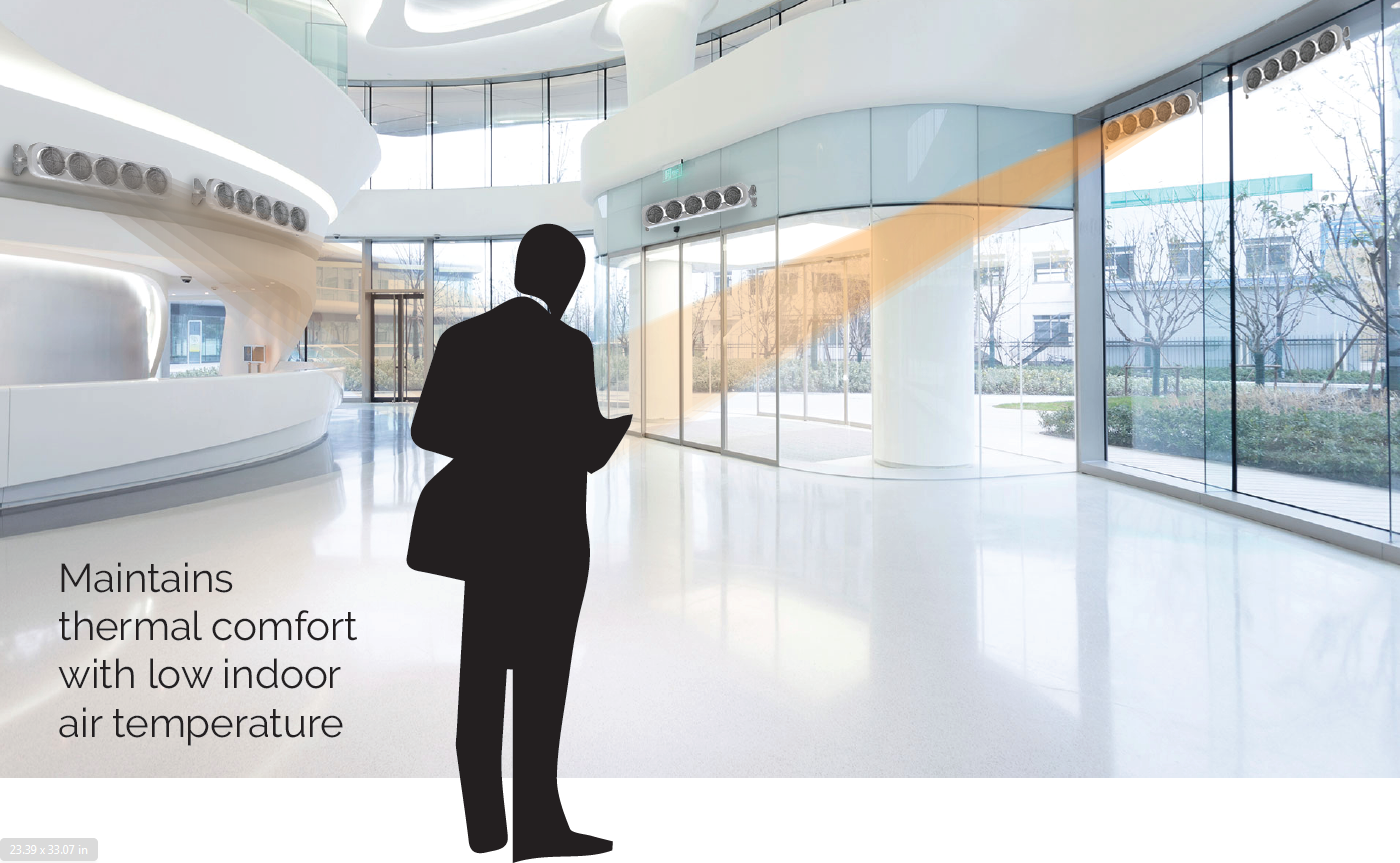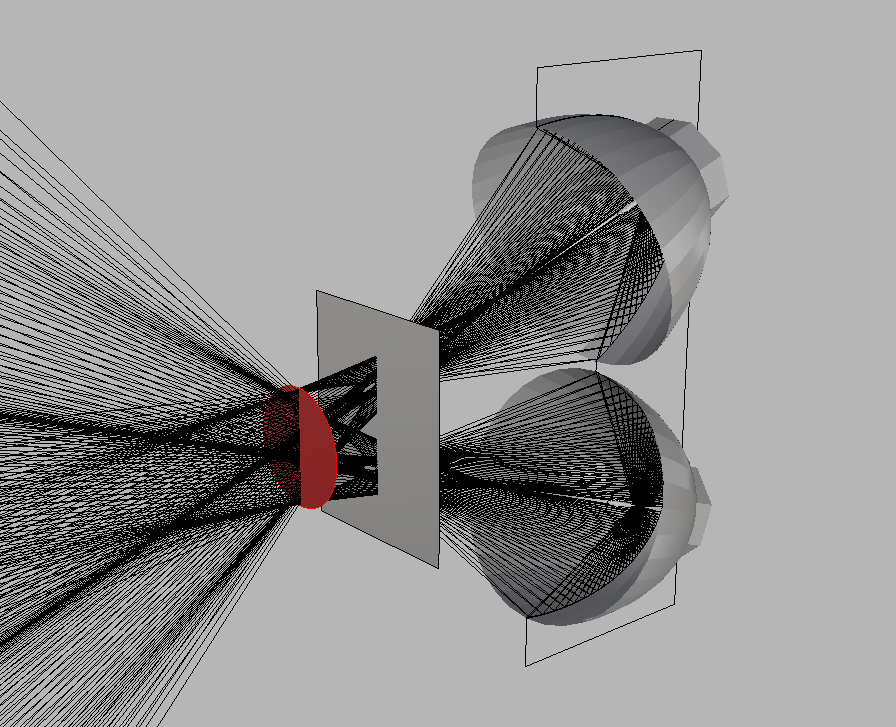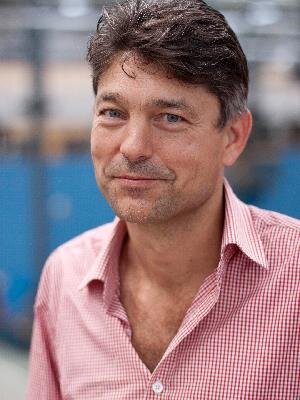The most promising development in heating technologies is the use of heat pumps. However, heat pumps are expensive to install in particular in older buildings. Thus, a design of new technology that would be easily implemented in old buildings is of importance. Furthermore, most contemporary building heating system’s do not directly heat people. Instead they heat building’s interior with the goal of decreasing the energy losses from the people. Due to building’s large thermal mass and inevitable losses to the outside environment, heating a building and maintaining it at temperatures providing thermal comfort to the users is energy demanding and expensive. An alternative to the conventional heating is to heat the building minimally and instead to targeted heat the user.

The goal of the project
The goal of the project was to design electrically powered system that would provide targeted heating to the users.
A heather assembly each carrying five reflectors that can tilt from - 45° to + 45° on the horizontal axis was designed. When the heather assembly is mounted at the height of 220 cm it can heat users at the distance between 1 and 10 m. If the air temperature of the building is maintained at 12.5 °C two complete heather assemblies are needed to keep the user in thermal comfort. The position of the user is detected by human location sensor. Each of the reflectors has at its heart 12W silicon nitride emitter. The reflector its self is designed to keep the beam collimated for 10 m, with the spread angle of 1.6°. It is made out of two injection molded, fire-retardant polystyrene parts. Where its surface is made reflective through aluminum vapor deposition. The designed targeted heating system was validated on users and showed capable of securing the thermal comfort under the indoor temperature of about 19 °C.
It is suggested that the designed targeted heating system is a promising adjacent to conventional heating technologies.



Reflectors collimate light to a spot (red) of diameter 20 cm, through a rectangle of natural mica

Kaspar Jansen
- +31 (0) 152786905
- k.m.b.jansen@tudelft.nl
-
Room B-3-170
Student
Michiel de Bie
Mentors
- Prof. dr. ir. Geraedts, J.M.P. (Jo)
- Nina Bogerd
